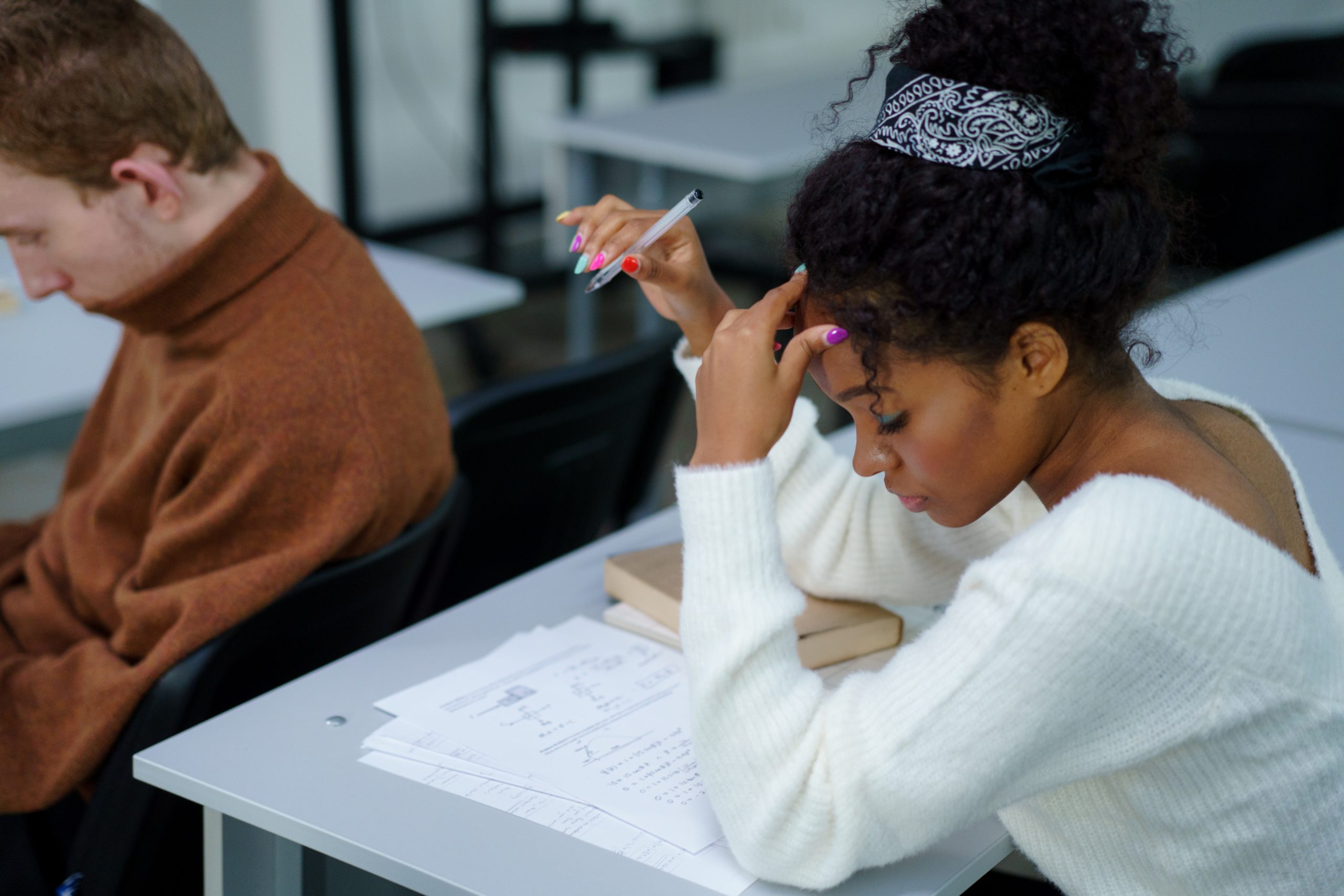5 Ways to Support Student Mental Health
Addressing mental health is crucial this year. Last week, we gave you strategies to support…

Addressing mental health is crucial this year. Last week, we gave you strategies to support your own mental wellness. This week, we’re focusing on how you can best support your students. This year is a chance to make mental wellness front and center, and to get creative with finding ways to support students (like our Teen Stress Badge)! And your impact is real—as one youth mental health activist we spoke to reminds us, “A teacher’s understanding in terms of mental health can go so far.” Let’s get to it!
We’re all changed by the challenges and trauma of the pandemic. To help students process these experiences, Springpoint designed The Found Project around two powerful questions: What have I ‘found’ during the pandemic? Who am I now?
Why It Matters: High schools implementing The Found Project this fall used an intensive art project to ask students to reflect on what they lost and found during the pandemic, and how these experiences shaped who they are. In doing so, these schools built community and showed students that their voices matter. Explore the curriculum here, and consider how you can design projects using these strategies:
- Model vulnerability by sharing from your own experience
- Encourage an asset-based approach
- Draw on student work for mentor texts
- Provide space for students to reflect on their own work
- Create meaningful end-products, like public exhibitions
Extra Credit: Helping Our Students Achieve ‘Post-Traumatic Growth’
To empower your students around mental health, ask for their input on what supports they need most.
Why It Matters: Teens are powerful advocates for their own mental health. Especially during the pandemic, students have spoken up on what they need from their schools, from more representative curriculum to relationship-centered teaching. As a teacher, you can encourage your students to speak out on mental health issues through opportunities like:
- Researching how other schools are supporting mental health, and reporting back their findings
- Leading student panels on mental wellness
- Proposing mental health supports to the principal or school board
Extra Credit: Teens Are Advocating for Mental Health Days Off School
Incorporate the arts into your class to give students space to feel, process, and express their emotions.
Why It Matters: The power of the arts to support positive mental health in students is truly amazing, from building community, to centering student voice, to fostering moments of joy. Consider the needs of your students this year, and brainstorm intentional arts interventions like:
- Poetry writing to uplift student voice
- Movement and dance to inspire body positivity
- A visual arts project responding to a need in the community
- Songwriting about an issue that’s important to students
Extra Credit: #Artivism: The Power of Art in Raising Student Activists | Rethink Together
Thanks to K-12 federal COVID relief funds, schools are in a historic position to invest in high school transformation, including how all students are supported.
Why It Matters: On top of experiences like remote learning and isolation, BIPOC students have experienced the trauma of systemic racism throughout the pandemic. Let’s a invest in structural supports to benefit students and families of color. Depending on the needs of your community, these supports could include:
- Recruiting and hiring multilingual counselors, social workers, and mental health professionals
- Funding anti-racist and trauma-informed mental health practices
- Providing information to undocumented families about accesible resources
Extra Credit: Advocate for BIPOC Mental Health This Year
COVID-19 challenged schools to build new structures to support the health of their communities. What if we used those same structures to support mental wellness?
Why It Matters: Schools around the country responded to the pandemic by building new systems to monitor COVID cases, to respond to COVID threats, and to communicate with families. Now, we have the chance to build on these procedures and normalize visible, regular mental health check-ins. Consider how your school might:
- Include questions about mental health in daily COVID screenings
- Learn from COVID response protocols to assess mental health threats
- Use contact-tracing resources to connect with families
Extra Credit: Evidence-Based Practices for Assessing Students’ Social and Emotional Well-Being
We are calling on all students 13-21 to join the nation’s largest student billboard challenge. Students will explore what it means to articulate visually their hopes and dreams, and how to leverage their creative visions for meaningful changemaking. Top submissions will have their art featured on a billboard in their community.
Check out the Billboard Challenge at the XQ Challenge site.









